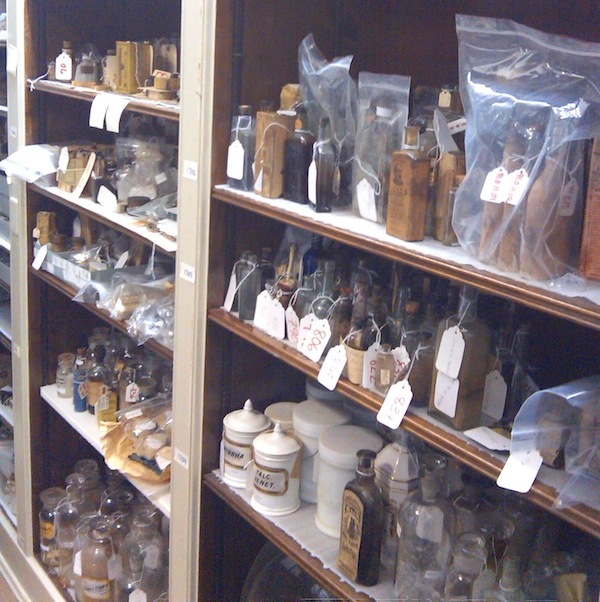What’s in Century-Old ‘Snake Oil’ Medicines? Mercury and Lead
A chemical analysis of early 1900s medicines, billed as cure-alls, revealed vitamins and calcium along with toxic compounds
![]()

A chemical analysis of early 1900s medicines like Hollister’s Golden Nugget Tablets revealed vitamins and calcium, but also toxic compounds like mercury and lead. Image via Mark Benvenuto
If you suffered from a medical ailment in the year 1900, your treatment options were varied: You could take everything from Dr. Tutt’s Liver Pills to Hollister’s Golden Nugget Tablets, Dr. Sawen’s Magic Nerving Pills or Dr. Comfort’s Candy-Covered Cathartic Compound.
Of course, their titles notwithstanding, the creators of these pills weren’t always doctors, and the medicines certainly hadn’t gone through the controlled randomized trials we have today to ensure safety—they could contain ingredients that were ineffective, or worse, toxic. In many cases, their proprietors might not have known what they were even putting in these so-called “snake oil” medicines (a term that likely stemmed from the sale of actual snake oil to supposedly treat joint pain).
But now, at least, we do. Mark Benvenuto, a chemist at University of Detroit Mercy, recently led a research group that chemically analyzed several dozen patent medicines dating to the late 1800s and early 1900s from the Henry Ford Museum‘s collections. Their findings, which they presented yesterday at the annual meeting of the American Chemical Society in Atlanta, were that many of the pills, powders and ointments tested had beneficial ingredients like calcium and zinc—but that others had toxins such as lead, mercury and arsenic.
“Back in the day, this was a very trial-and-error kind of field,” Benvenuto said in an interview. “The stuff that we think of as dangerous now, though it was dangerous, was as cutting-edge as they had at the time.”
The researchers figured out what was in the historical medicines via a pair of methods. For the solid pills and powders, they used X-ray fluorescence, in which a substance is bombarded with X-rays and the particles emitted as a result indicate the material’s composition. For the liquid ointments, they used nuclear magnetic resonance testing, which relies on the electromagnetic emissions of a material’s nuclei when placed in a magnetic field.
The findings, Benvenuto says, will provide extra context for visitors to the Ford Museum, helping them better understand this era of medical quackery. “You can look at Dr. J.J. Gallop’s Vegetable Family Pills and find out what’s supposed to be in them from the box, and what they cost from some old newspaper that’s archived, but you can’t tell what’s really in them without testing,” he said.
Though some medicines intentionally misled customers about their contents and made outlandish claims, the presence of mercury in, say, Dr. F. G. Johnson’s French Female Pills doesn’t necessarily indicate that Mr. Johnson was a quack, Benvenuto said. Mercury was long used as the primary treatment for syphilis, as it kills the spirochete bacteria that cause the disease, though it can also harm the patient. (Lewis and Clark, among others, used mercury to treat the sexually-transmitted infection, and archaeologists have even pinpointed some of the camping spots of their Corps of Discovery Expedition by finding traces of mercury in the soil.)
In an era before rigorously controlled trials, putting a what was commonly believed to be a safe cure into a medicine and simply selling it to people was considered normal practice, and may have indeed led to progress in medicine. “Nowadays, we start by seeing if a drug can kill certain kinds of cells, then we’ll try it in mice, then dogs, then humans,” Benvenuto said. “Obviously, we have a better system now, but I think this type of medicine was the first step in the road to where we are now. Compared to folk cures, it was a first step at being logical.”
/https://tf-cmsv2-smithsonianmag-media.s3.amazonaws.com/accounts/headshot/joseph-stromberg-240.jpg)

/https://tf-cmsv2-smithsonianmag-media.s3.amazonaws.com/accounts/headshot/joseph-stromberg-240.jpg)